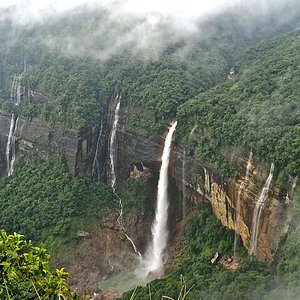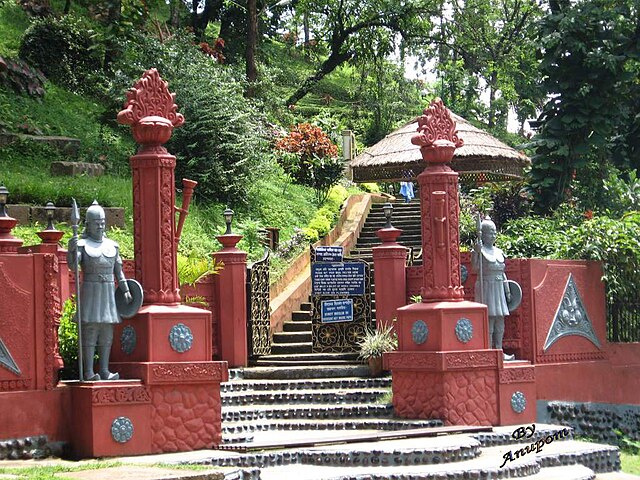Changsangmoko and Chilise are fascinating topics. They hold unique cultural significance.
Many people are curious about Changsangmoko and Chilise, but few know their deeper meanings. These terms are rich with history and tradition, offering a glimpse into the cultural fabric of their origins. Understanding these concepts can deepen one’s appreciation for the heritage they represent.
In this blog post, we will explore the origins, significance, and impact of Changsangmoko and Chilise. By the end, you’ll have a better grasp of these intriguing subjects. Let’s dive into the world of Changsangmoko and Chilise and uncover their stories.
Introduction To Korean Cuisine
Korean cuisine is a feast for the senses. It’s known for its bold flavors, vibrant colors, and a balance of textures. When you sit down to a Korean meal, you’re not just eating food; you’re experiencing a part of Korea’s rich culture and history. Dishes like Changsangmoko and Chilise are perfect examples of this culinary tradition, showcasing the depth and diversity of Korean food.
Cultural Significance
The cultural significance of Korean cuisine cannot be overstated. Food in Korea is deeply tied to the nation’s traditions and communal lifestyle. For instance, sharing meals is a fundamental aspect of Korean dining. When you enjoy dishes like Changsangmoko, you’re participating in a tradition that emphasizes togetherness and harmony.
Changsangmoko is not just about the ingredients; it’s about the experience of coming together to enjoy a meal. The same goes for Chilise, which is often prepared for special occasions and family gatherings. These dishes connect you to generations of Korean families who have passed down recipes and cooking methods.
Regional Variations
Korean cuisine varies significantly from one region to another. Each area has its own unique ingredients and cooking styles. This diversity is what makes exploring Korean food so exciting.
- Jeolla Province: Known for its rich and flavorful dishes, the region is famous for its generous use of seasonings. Changsangmoko from Jeolla might be spicier and more intense in flavor.
- Gyeongsang Province: This area is known for its saltier and simpler dishes. Chilise from Gyeongsang may have a more straightforward taste, highlighting the quality of the ingredients.
- Gangwon Province: Known for its mountainous terrain, this region offers dishes that are hearty and comforting. Expect Changsangmoko here to be more rustic and filling.
Have you ever wondered how a single dish can taste so different depending on where it’s made? This is the beauty of regional variations in Korean cuisine. Each bite tells a story of the land, the climate, and the people who live there.
Next time you’re in a Korean restaurant, ask about the origin of the dishes. You might be surprised by the interesting stories behind them.

Credit: www.tourmyindia.com
What Is Changsangmoko?
Are you ready to take your taste buds on an adventurous journey? If you are curious about unique dishes, then you must learn about Changsangmoko. This intriguing dish is a delightful combination of flavors that will leave you craving for more. Let’s dive into its fascinating aspects starting with its historical background and how it is prepared.
Historical Background
Changsangmoko has a rich history that dates back to ancient times. Originating from a small village, this dish was traditionally prepared during special occasions and festivals. It was considered a treat, often reserved for honored guests. The recipe has been passed down through generations, with each family adding their unique touch. Over time, Changsangmoko became a symbol of hospitality and culinary heritage.
Ingredients And Preparation
The magic of Changsangmoko lies in its ingredients and how they are brought together. Here’s a breakdown:
- Main Ingredients: Fresh vegetables, lean meats, and a blend of spices.
- Spices: A mix of both mild and bold spices to create a balanced flavor.
- Special Touch: A secret family ingredient that adds a unique twist.
Preparing Changsangmoko is an art. You start by finely chopping the vegetables and marinating the meat with spices. The key is to let the flavors meld together for a few hours. Then, it’s slow-cooked to perfection, ensuring that the ingredients are tender and well-infused with spices.
Have you ever tried cooking a dish that has been in your family for generations? It’s not just about the taste; it’s about preserving a part of your heritage. When I first made Changsangmoko, I was amazed at how the simple act of cooking could connect me to my ancestors. It made me appreciate the effort and love that went into creating such a dish.
Now, think about your favorite family recipe. What makes it special? The ingredients? The memories associated with it? Or perhaps the way it brings everyone together? Changsangmoko is more than just food; it’s an experience. It’s about savoring the moment and sharing it with loved ones.
So, the next time you’re looking to try something new, give Changsangmoko a shot. You might discover a new favorite, and who knows, it might become a part of your culinary tradition.
Exploring Chilise
Discover the charm of Changsangmoko and Chilise. These places offer unique landscapes and rich cultural experiences. Enjoy exploring their natural beauty and vibrant traditions.
Exploring Chilise Chilise is a culinary gem that hails from the mountainous regions of Nepal. This vibrant dish is a delightful blend of ingredients, rich in flavor and history. Let’s dive into the origins and cooking techniques of Chilise to understand what makes it so special.Origin Of Chilise
Chilise originates from the remote village of Changsangmoko, nestled in the hills of Eastern Nepal. This dish is a staple for the locals, who have passed down the recipe through generations. Why is Chilise so significant? It’s not just a meal; it’s a cultural treasure. The ingredients are locally sourced, ensuring each bite is fresh and authentic. The use of spices and herbs reflects the region’s agricultural bounty. Fun Fact: Did you know that the name “Chilise” is derived from the local dialect, meaning “spicy delight”? It perfectly captures the essence of this fiery dish.Cooking Techniques
Cooking Chilise is an art that anyone can master with a bit of patience and practice. First, gather your ingredients: fresh green chilies, garlic, ginger, onions, tomatoes, and a blend of spices. Here’s a simple breakdown: 1. Prepare the vegetables: Chop the chilies, garlic, ginger, onions, and tomatoes into small pieces. 2. Heat the oil: Use a heavy-bottomed pan to ensure even cooking. 3. Sauté the spices: Add cumin seeds and let them sizzle until aromatic. 4. Add the vegetables: Toss in the onions first, then garlic and ginger. Sauté until golden brown. 5. Incorporate the chilies and tomatoes: Stir well and let the mixture cook down to a thick consistency. 6. Season and simmer: Add salt, turmeric, and other spices. Let it simmer for a few minutes. Pro Tip: To elevate the flavor, use mustard oil instead of regular cooking oil. It adds a unique pungency that complements the spices. While making Chilise, I recall my own experience in Changsangmoko, where a local chef shared her secret: a pinch of fenugreek seeds. This small addition transformed the dish, adding depth and complexity. What innovative twist will you bring to your Chilise? Your creativity can turn this traditional recipe into a personal masterpiece. Try it out and let your taste buds lead the way. Have you ever tried making a traditional dish with a modern twist? How did it turn out? Share your experiences and let’s explore the culinary world together.
Credit: www.tourmyindia.com
Flavor Profiles
Changsangmoko offers a deep, smoky flavor with hints of garlic and ginger. Chilise brings a fiery, tangy taste with a touch of sweetness. Both create a unique and bold culinary experience.
When exploring the flavor profiles of Changsangmoko and Chilise, you quickly realize how these two dishes offer unique experiences for your taste buds. Each dish brings its blend of spices and balancing tastes, making them a delight for any food enthusiast.Spice Levels
Changsangmoko and Chilise are known for their distinct spice levels. Changsangmoko, a popular dish in many parts of Asia, tends to have a moderate heat. The spices used provide a warm sensation that enhances the overall flavor without overpowering the other ingredients. Chilise, on the other hand, steps up the heat. It’s perfect for those who enjoy a fiery kick. The blend of chili peppers in Chilise creates a bold and intense spice level that can make your taste buds tingle. Ever tried Chilise on a cold day? The heat from the dish can warm you right up, making it a great comfort food during the winter months.Balancing Tastes
In Changsangmoko, the balance of flavors is key. The dish combines a variety of ingredients that complement each other beautifully. You get a harmonious blend of sweet, savory, and slightly tangy flavors. This balance ensures that no single taste overpowers the other. Chilise, despite its heat, also achieves a remarkable balance. The intense spiciness is countered by a hint of sweetness and tanginess. This combination creates a well-rounded flavor profile that keeps you coming back for more. Have you ever noticed how a touch of sweetness can enhance the spiciness of a dish? This is why adding a bit of honey or sugar to Chilise can elevate its taste to another level. How do you like your dishes balanced? Do you prefer the moderate heat of Changsangmoko or the fiery kick of Chilise? Trying both might give you a new appreciation for how spices and flavors can be balanced in diverse ways. In your culinary adventures, experimenting with the spice levels and balancing tastes of Changsangmoko and Chilise can be a rewarding experience. Whether you enjoy a dish with moderate heat or one that packs a punch, there’s always something new to discover and appreciate.Health Benefits
Changsangmoko and Chilise are not just delicious. They also offer many health benefits. These traditional foods have been a staple for centuries. Let’s explore their nutritional value and their use in traditional remedies.
Nutritional Value
Changsangmoko is rich in vitamins. It contains high levels of vitamin C and A. These vitamins boost the immune system. They help fight infections and keep the skin healthy. Changsangmoko also has a good amount of fiber. Fiber aids digestion and prevents constipation.
Chilise is packed with antioxidants. These compounds protect the body from damage. They reduce the risk of chronic diseases. Chilise is also a good source of iron. Iron is essential for making red blood cells. It helps prevent anemia and keeps you energetic.
Traditional Remedies
In traditional medicine, Changsangmoko is a common remedy. People use it to treat colds and coughs. Its high vitamin C content boosts the immune system. It helps the body recover faster from illnesses.
Chilise is also used in many traditional treatments. It is known for its anti-inflammatory properties. This makes it useful in treating arthritis and joint pain. Some people use Chilise to improve digestion. It helps relieve stomach aches and promotes a healthy gut.
Both Changsangmoko and Chilise are easy to include in your diet. They offer a natural way to improve health. Eating these foods can support overall well-being. So, enjoy their taste and the health benefits they provide.
Popular Dishes Featuring Changsangmoko
Changsangmoko, a unique ingredient from the East, has found its way into many dishes. Its distinct flavor profile brings a new twist to traditional recipes. Let’s explore some popular dishes featuring Changsangmoko.
Signature Recipes
One beloved dish is Changsangmoko stir-fry. It combines fresh vegetables and tender meat. This dish is quick and easy to make. The Changsangmoko adds a rich, earthy taste. It pairs well with a bowl of steamed rice.
Another favorite is Changsangmoko soup. This dish warms you up on a chilly day. The soup is hearty and full of flavor. It includes chunks of Changsangmoko, potatoes, and carrots. The broth is seasoned with traditional spices.
Fusion Variations
Changsangmoko tacos are a fusion favorite. They blend Eastern and Western flavors. The Changsangmoko is sautéed with onions and peppers. It is then served in soft tortillas. A squeeze of lime adds a fresh touch.
Changsangmoko pizza is another creative dish. It features a crispy crust and savory toppings. Changsangmoko slices are layered with cheese and tomato sauce. The result is a delightful mix of textures and tastes.
Chilise In Modern Cuisine
Chilise, a traditional condiment made from fermented chilis, has found its way into modern cuisine, adding a unique and spicy twist to contemporary dishes. This traditional ingredient, deeply rooted in the culinary heritage of certain regions, is now making waves across the globe. As chefs and home cooks alike seek to innovate and elevate their dishes, Chilise offers a bold and vibrant flavor profile that is both versatile and exciting. Let’s delve into how Chilise is being embraced in contemporary dishes and the latest restaurant trends.
Contemporary Dishes
In modern cuisine, Chilise is more than just a spicy addition; it’s a transformative ingredient. Imagine the robust kick it gives to a classic pasta dish, turning a regular tomato sauce into a fiery, unforgettable experience. One of the most interesting uses I’ve seen recently was in a fusion taco recipe. The Chilise was mixed with sour cream to create a spicy crema that perfectly complemented the fresh flavors of the taco fillings.
Furthermore, Chilise is being used to marinate meats, enhancing the depth of flavor in grilled and roasted dishes. It’s not uncommon now to find Chilise-infused burgers, where the condiment is either mixed into the patty or used as a topping. Vegetarian dishes aren’t left out either. Roasted vegetables with a light Chilise glaze can turn a simple side into the star of the meal.
Have you ever tried Chilise in a dessert? It might sound unusual, but a touch of Chilise in a dark chocolate mousse can provide an exciting contrast between the sweetness of the chocolate and the heat of the chili. This innovative use of Chilise shows its versatility and the endless possibilities it offers in the kitchen.
Restaurant Trends
Restaurants are at the forefront of Chilise’s rise in popularity. Chefs are constantly seeking new ways to surprise and delight their patrons, and Chilise fits right into this quest for innovation. Many contemporary eateries now feature Chilise in their signature dishes. The appeal lies in its ability to add a layer of complexity and heat that diners are increasingly craving.
One trend that stands out is the use of Chilise in global fusion cuisine. Imagine a traditional ramen bowl with a Chilise broth, blending the rich umami flavors of Japanese cuisine with the fiery notes of the condiment. This kind of cross-cultural culinary experiment is not just a trend but a testament to Chilise’s adaptability.
Bistro-style restaurants are also incorporating Chilise into their menus in creative ways. From Chilise aioli served with crispy fries to Chilise-spiked cocktails, the condiment is making its mark. Yes, you read that right—cocktails. Mixologists are experimenting with Chilise-infused syrups and bitters, creating drinks that pack a punch both in terms of flavor and experience.
Have you noticed any unexpected uses of Chilise in your favorite restaurants? What are your thoughts on integrating traditional ingredients into modern cuisine? Your next dining experience could be a great opportunity to explore the spicy allure of Chilise.
Cooking Tips
Cooking Changsangmoko and Chilise can be a rewarding experience. These dishes offer rich flavors that can impress any dinner guest. To get the best results, follow these simple cooking tips. You’ll find essential techniques and common mistakes to avoid.
Essential Techniques
Proper marination is key for Changsangmoko. Use fresh ginger, garlic, and soy sauce. Let the meat soak for at least two hours. This helps the flavors penetrate deeply. For Chilise, always use ripe chilies. They add the right amount of heat and sweetness. Cook chilies on low heat to release their flavors fully.
Using a heavy-bottomed pan ensures even cooking. This is vital for both dishes. Heat the pan before adding ingredients. This prevents sticking and ensures even browning. Stir frequently to avoid burning.
Common Mistakes
Avoid overcooking the meat in Changsangmoko. Overcooked meat becomes tough and loses flavor. Use a meat thermometer if needed. For Chilise, do not add too much water. Excess water dilutes the flavors. Use just enough to create a thick sauce.
Another common mistake is not balancing the spices. Both dishes need a balance of heat and sweetness. Taste as you cook and adjust spices accordingly. Finally, do not rush the cooking process. Both dishes need time to develop their rich flavors.

Credit: www.tourmyindia.com
Frequently Asked Questions
What Is Very Famous In Nagaland?
Nagaland is famous for its vibrant Hornbill Festival, traditional Naga cuisine, and picturesque landscapes. The state’s diverse tribal culture and handcrafted arts are also well-known.
Why Is Nagaland Famous For Tourism?
Nagaland is famous for its vibrant culture, stunning landscapes, and unique festivals. The Hornbill Festival attracts many visitors. The scenic beauty of mountains and valleys adds to its charm. Rich traditions and tribal heritage make it a unique destination. Enjoy local cuisine and handicrafts for an unforgettable experience.
What Is Changsangmoko?
Changsangmoko is a traditional dish originating from a specific region. It is known for its unique flavors and cultural significance.
How Is Changsangmoko Prepared?
Changsangmoko is prepared using locally sourced ingredients. It involves a specific cooking method to enhance its distinct taste.
Conclusion
Changsangmoko and Chilise offer unique and enriching experiences. Both destinations boast rich culture and history. Visitors can enjoy stunning landscapes and delightful cuisine. Immerse yourself in local traditions and explore hidden gems. These places promise memorable adventures for all travelers.
Plan your trip and discover the charm of Changsangmoko and Chilise. Your journey will be filled with unforgettable moments. Start your adventure and create lasting memories. Don’t miss out on these captivating destinations.
{ “@context”: “https://schema.org”, “@type”: “FAQPage”, “mainEntity”: [ { “@type”: “Question”, “name”: “What is very famous in Nagaland?”, “acceptedAnswer”: { “@type”: “Answer”, “text”: “Nagaland is famous for its vibrant Hornbill Festival, traditional Naga cuisine, and picturesque landscapes. The state’s diverse tribal culture and handcrafted arts are also well-known.” } } , { “@type”: “Question”, “name”: “Why is Nagaland famous for tourism?”, “acceptedAnswer”: { “@type”: “Answer”, “text”: “Nagaland is famous for its vibrant culture, stunning landscapes, and unique festivals. The Hornbill Festival attracts many visitors. The scenic beauty of mountains and valleys adds to its charm. Rich traditions and tribal heritage make it a unique destination. Enjoy local cuisine and handicrafts for an unforgettable experience.” } } , { “@type”: “Question”, “name”: “What is Changsangmoko?”, “acceptedAnswer”: { “@type”: “Answer”, “text”: “Changsangmoko is a traditional dish originating from a specific region. It is known for its unique flavors and cultural significance.” } } , { “@type”: “Question”, “name”: “How is Changsangmoko prepared?”, “acceptedAnswer”: { “@type”: “Answer”, “text”: “Changsangmoko is prepared using locally sourced ingredients. It involves a specific cooking method to enhance its distinct taste.” } } ] }




